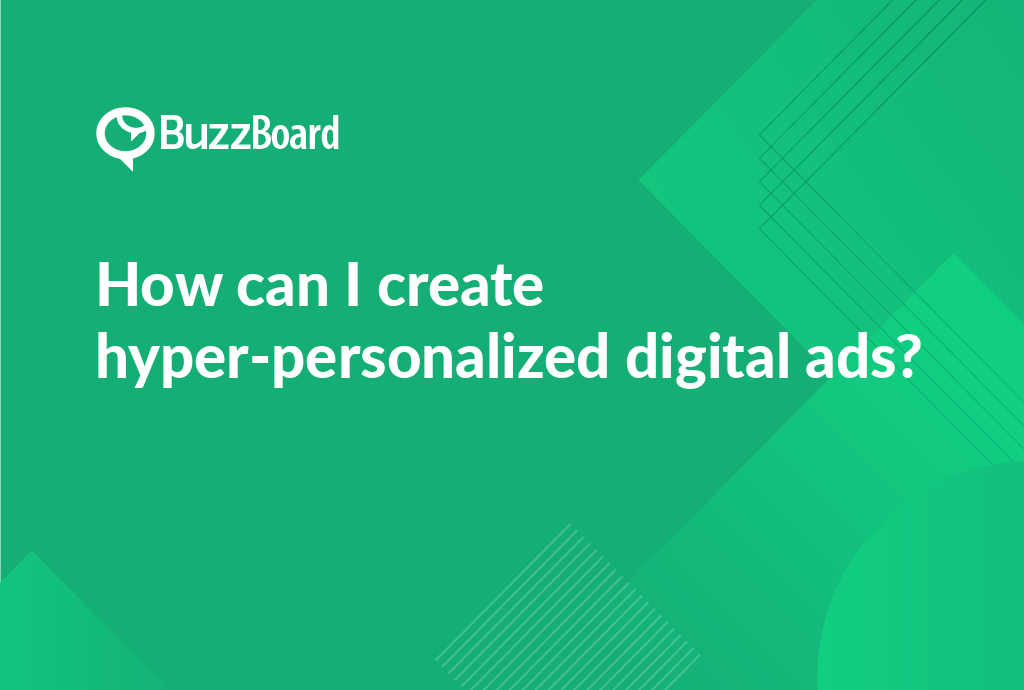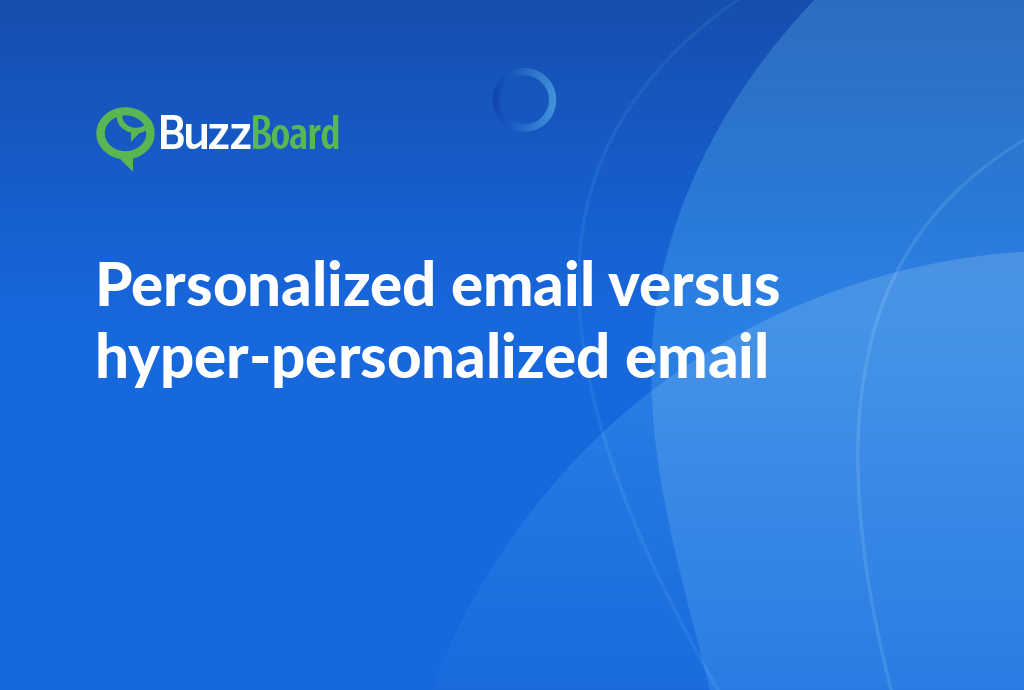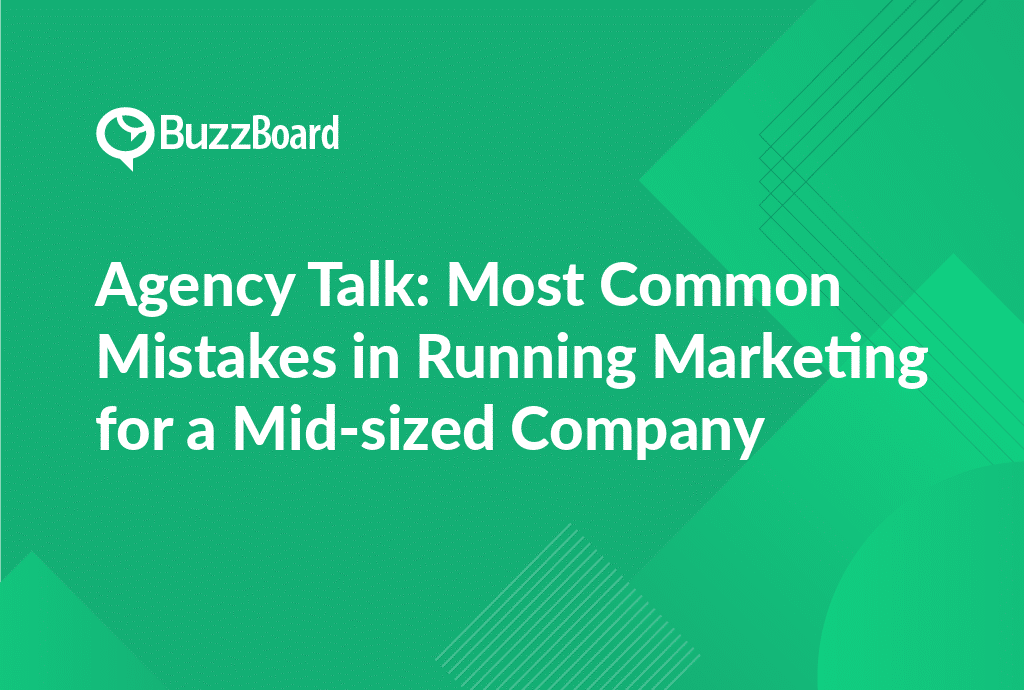Create hyper-personalized digital ads by leveraging data and technology to deliver tailored messages to individual users. Start by collecting and integrating customer data from various sources, such as CRM systems, social media, and purchase history. Then, use machine learning algorithms to analyze this data and identify patterns, preferences, and behaviors. Next, use this insights to create targeted ad campaigns that speak directly to each user’s interests, needs, and motivations. Finally, continuously monitor and optimize your ads to ensure maximum relevance and effectiveness.
What Are the Steps Involved in Creating Hyper-Personalized Digital Ads for Targeted Marketing?
The creation of hyper-personalized digital ads is a trending strategy in online marketing. This approach aims at targeting individual customers to enhance experiences and increase conversions. It involves using customer data to produce custom ads and bespoke content.
Step 1: Data Collection
The first step in creating hyper-personalized digital ads involves gathering relevant data about your customers. This information can include demographic details, browsing history, purchasing history, and social media behavior.
Step 2: Data Analysis
After collecting the data, the next step is to scrutinize it to unearth patterns and preferences. Several tools and software can aid with this, facilitating the simplification and understanding of the vast quantities of information.
Step 3: Customer Segmentation
Following data analysis, segmenting customers based on the identified patterns and preferences is the next step. Grouping similar customers makes it easier to tailor ads to their specific interests, needs, and behaviors.
Step 4: Creating the Custom Ads
The final stage involves creating hyper-personalized ads, grounded in customer data and group segmentation. These personalized ads can then be broadcast via various digital advertising channels.
In conclusion, hyper-personalization in digital advertising involves more than merely inserting a customer’s name in an email; it plays a vital part in modern online marketing strategies.
The Impact and Benefits of Hyper-Personalized Digital Ads on Online Marketing?
Sales representatives must continually adapt to stay ahead of the curve. One trend making substantial waves is hyper-personalized digital ads, which are revolutionizing the way businesses connect with their target audience. Hyper-personalization takes customization to the next level by leveraging artificial intelligence and real-time data to deliver highly relevant content, products, or services that are tailored to each user’s unique needs, behaviors, and preferences.
Unlike traditional demographic segmentation and broad ad targeting, hyper-personalization considers a wide range of factors, including users’ click-through rates, browsing habits, and their engagement history with previous ads. This granular approach enables businesses to optimize their digital ads to match the consumer’s exact needs and preferences, resulting in a more effective and efficient online marketing strategy.
The benefits of hyper-personalized ads are numerous and far-reaching. Firstly, they significantly boost ad engagement by providing genuinely interesting and relevant content to the user, leading to increased click-through rates. This, in turn, drives higher conversion rates and ultimately, increased revenue for businesses. Hyper-personalized ads also reduce ad fatigue and annoyance among consumers, as the tailored content is perceived as helpful rather than intrusive. This positive brand perception can lead to increased customer loyalty and advocacy, further driving business growth.
Moreover, hyper-personalized ads enable businesses to build stronger relationships with their customers by providing them with a more personalized and relevant experience. This can lead to increased customer retention rates, as customers are more likely to engage with brands that understand and cater to their unique needs and preferences.
For sales representatives, recognizing the potential of hyper-personalized digital ads is crucial for staying competitive in today’s saturated digital landscape. By incorporating hyper-personalization into their digital ad strategy, sales representatives can provide their clients with a unique competitive advantage, making their online marketing more effective and efficient. This approach can also unlock new avenues of growth for both the agency and the client, as hyper-personalized ads can drive increased revenue, customer loyalty, and brand awareness.
To successfully integrate hyper-personalization into their services, sales representatives should focus on the following key areas:
- Data collection and analysis: Sales representatives should work closely with their clients to collect and analyze data on their target audience, including their behaviors, preferences, and engagement history.
- AI-powered ad targeting: Sales representatives should leverage artificial intelligence and machine learning algorithms to optimize ad targeting and delivery, ensuring that ads are delivered to the right audience at the right time.
- Real-time data integration: Sales representatives should integrate real-time data into their ad targeting and delivery, enabling them to respond to changes in consumer behavior and preferences in real-time.
- Ad creative optimization: Sales representatives should optimize ad creative to ensure that it is relevant, engaging, and effective in driving conversions.
- Continuous monitoring and optimization: Sales representatives should continuously monitor the performance of their hyper-personalized ads and make data-driven decisions to optimize and improve their ad strategy.
By following these best practices and staying up-to-date with the latest trends and technologies in hyper-personalized digital ads, sales representatives can provide their clients with a competitive edge in today’s digital landscape, driving increased revenue, customer loyalty, and brand awareness.
How Are Custom Ads Influential in Achieving Hyper-Personalization in Digital Advertising?
The digital advertising landscape is undergoing a significant transformation, with hyper-personalized digital ads emerging as a cutting-edge trend in online marketing. Hyper-personalization enables brands to craft customized ads that cater to individual consumers’ unique behaviors, preferences, and real-time interaction data. This approach allows businesses to create a deeper connection with their target audience, ultimately driving increased engagement and conversions.
For small and local businesses, implementing hyper-personalization can be a game-changer. Custom ads play a vital role in this strategy, extending beyond simply incorporating a customer’s first name. Instead, they delve deeper into creating marketing messages that resonate with consumers’ specific needs and preferences. By doing so, businesses can demonstrate a genuine understanding of their customers’ requirements, fostering a sense of trust and loyalty.
When consumers feel that a brand understands and can meet their individual needs, they are more likely to engage with the brand, leading to stronger, more loyal relationships. Custom ads enable businesses to showcase their understanding of specific requirements, setting them apart from competitors and establishing a competitive edge.
Moreover, hyper-personalization offers businesses the opportunity to refine their messaging in real-time, based on data-driven insights. This means that ad campaigns can continually evolve and improve, allowing businesses to optimize their marketing strategies and maximize their return on investment (ROI).
To leverage the full potential of custom ads, sales representatives must learn to optimize their use in digital advertising. This requires a deep understanding of consumer behavior, preferences, and needs, as well as the ability to analyze and act on real-time data. By doing so, businesses can create a seamless and personalized experience for their customers, driving increased engagement, conversions, and loyalty.
Every interaction with a consumer should be viewed as an opportunity to understand them better and deliver a progressively personalized experience. Custom ads encourage businesses to strive for this level of personalization, recognizing that each interaction is a chance to build a stronger connection with their target audience.
Furthermore, the efficiency of hyper-personalization in converting and retaining consumers through custom ads is undeniable. By tailoring their marketing messages to individual consumers’ needs and preferences, businesses can create a loyal customer base that is more likely to return and recommend their brand to others. In today’s competitive digital landscape, this level of personalization is essential for businesses looking to stay ahead of the curve and drive long-term success.
Hyper-personalization and custom ads are powerful tools in digital advertising, offering businesses a unique opportunity to connect with their target audience on a deeper level. By leveraging these strategies, businesses can create a loyal customer base, drive increased engagement and conversions, and establish a competitive edge in their market. As the digital advertising landscape continues to evolve, it is essential for businesses to stay ahead of the curve and adapt to the latest trends and technologies, including hyper-personalization and custom ads.
Shed Light on the Strategies for Implementing Hyper-Personalized Digital Ads for Optimizing Digital Marketing Efforts?
As a sales representative in the world of digital marketing agencies, developing a strategic mindset is essential to achieving success in today’s fast-paced and competitive digital landscape. One standout strategy that can help you stand out from the crowd is the employment of hyper-personalized digital ads. Hyper-personalization in digital advertising involves more than just creating custom ads that account for a user’s basic information, such as name, age, and location. It requires a deep dive into aggregate personal data, providing an online marketing strategy that is unique to each individual user’s interests, web behavior, and preferences.
Hyper-personalization takes personalization to the next level by leveraging artificial intelligence (AI) and live data to present more suitable content, product, and service information to consumers. Unlike generic, one-size-fits-all ads, hyper-personalized digital ads create a sense of individual attention, which can potentially boost engagement and conversion rates. By tailoring your messaging, design, and offers to each individual user’s unique characteristics, you can deliver a highly personalized user experience that resonates with them on a deeper level.
To maximize your digital marketing campaigns, consider incorporating demographic data, browsing history, and previous purchase behavior when designing ads. This can help you create targeted ads that speak directly to each individual user’s needs and interests. For example, if a user has previously purchased a product from your brand, you can create a follow-up ad that offers them a special promotion or discount on a related product.
However, applying hyper-personalization in your digital ads may not be straightforward. It may require a fundamental shift in your marketing perspective, from a mass effort to individualized conversations. This means moving away from generic, broad-stroke marketing strategies and towards more targeted and personalized approaches.
The outcome of incorporating hyper-personalization in your digital ads can be significant. By delivering a highly personalized user experience, you can increase engagement, conversion rates, and ultimately, your return on investment (ROI). Consumers will feel recognized, comprehended, and valued, leading to increased loyalty and advocacy for your brand.
Developing a deeper understanding and utilizing the power of hyper-personalized digital ads can propel your agency to the next level. By staying ahead of the curve and embracing the latest trends and technologies, you can differentiate yourself from competitors and establish your agency as a leader in the digital marketing space.
Some key takeaways to keep in mind when implementing hyper-personalization in your digital ads include:
- Use AI and machine learning to analyze user data and create targeted ads
- Incorporate demographic data, browsing history, and previous purchase behavior into your ad design
- Tailor your messaging, design, and offers to each individual user’s unique characteristics
- Focus on individualized conversations rather than mass marketing efforts
- Continuously monitor and optimize your ad campaigns to ensure maximum ROI
By following these best practices and staying committed to the power of hyper-personalization, you can unlock the full potential of your digital marketing campaigns and drive real results for your clients.
Some Successful Examples of Businesses Who Have Effectively Leveraged Hyper-Personalized Digital Ads?
Hyper-personalized digital ads have emerged as a game-changing tool that enables businesses to offer unique and tailored experiences to their customers. By leveraging advanced data analytics and machine learning algorithms, hyper-personalized ads can be crafted to resonate with individual customers, increasing the likelihood of conversion and driving business growth.
To illustrate the effectiveness of hyper-personalized digital ads, let’s take a closer look at a few compelling case studies from small and local businesses that have successfully harnessed this technology.
One such example is a fitness studio that saw a staggering 213% surge in website traffic and a 53% uptick in membership sign-ups after implementing hyper-personalized digital ads. By targeting individuals in the vicinity who expressed interests in similar fitness activities, the studio was able to create a sense of relevance and connection with potential customers. This targeted approach not only drove traffic to their website but also converted visitors into paying customers.
Another example is a small boutique that used customized ads to connect with potential consumers. By segmenting their target audience based on shopping behavior, the boutique was able to craft online ads that catered to individual preferences. As a result, they recorded a 45% rise in sales and saw their customer base expand by 30%. This success can be attributed to the boutique’s ability to create a personalized experience for each customer, increasing the likelihood of conversion and loyalty.
A local restaurant also leveraged the power of hyper-personalization by employing customer geolocation and preference data in its digital marketing campaigns. By targeting customers based on their location and preferences, the restaurant was able to boost its average order value by 25% and escalate its app download rate by 40%. This targeted approach not only drove sales but also encouraged customers to engage with the restaurant’s brand and loyalty program.
So, what’s the secret to hyper-personalization? The key lies in comprehending your customer and aligning your ads with their behaviors and needs. This requires a deep understanding of your target audience, including their demographics, interests, and preferences. By leveraging data analytics and machine learning algorithms, businesses can create highly targeted and personalized ads that resonate with individual customers.
To get started with hyper-personalization, businesses can begin by:
- Collecting and analyzing customer data: This includes demographic information, purchase history, and online behavior.
- Segmenting target audiences: By grouping customers based on shared characteristics, businesses can create targeted ads that resonate with individual segments.
- Crafting personalized ads: Using data analytics and machine learning algorithms, businesses can create ads that cater to individual preferences and behaviors.
- Measuring and optimizing: By tracking the performance of hyper-personalized ads, businesses can refine their targeting and ad creative to maximize ROI.
By incorporating these strategies into their digital marketing campaigns, businesses can create a more personalized and engaging experience for their customers, driving conversions, loyalty, and ultimately, business growth.
Conclusion
In conclusion, creating hyper-personalized digital ads requires a strategic approach that combines data collection, machine learning, and continuous optimization. By leveraging customer data from various sources, analyzing user behavior and preferences, and delivering targeted messages, you can create ads that resonate with individual users and drive meaningful engagement.
Remember to prioritize data quality, ensure compliance with regulations, and continuously monitor and optimize your campaigns to achieve maximum ROI. With the right tools and strategies, you can unlock the full potential of hyper-personalization and take your digital advertising to the next level. By doing so, you’ll be able to build stronger relationships with your customers, increase brand loyalty, and ultimately drive business growth.









